How can a wideband double-ridged horn antenna be used in wireless communication and testing for 5G and beyond?
In the rapidly evolving landscape of wireless communications, the transition to 5G technology and the exploration of beyond-5G capabilities demand robust testing equipment and specialized antenna solutions. The Wideband Double-ridged Horn Antenna has emerged as a critical component in this technological evolution, offering exceptional frequency range coverage, high gain characteristics, and consistent performance across broad frequency spectrums. These antennas typically operate from frequencies as low as 0.2 GHz up to 40 GHz, making them ideally suited for the challenging requirements of modern wireless communications systems, including 5G networks and experimental beyond-5G applications. With their unique double-ridged design, these antennas provide the stable platform necessary for precise measurements, signal intelligence, and system testing that next-generation wireless technologies require.
Key Applications of Wideband Double-ridged Horn Antennas in 5G Testing
Base Station Performance Evaluation
The deployment of 5G infrastructure requires comprehensive testing to ensure optimal performance in real-world conditions. Wideband Double-ridged Horn Antennas play a pivotal role in this process by providing accurate measurements of signal strength, coverage patterns, and propagation characteristics. When evaluating base station performance, these antennas offer several advantages over conventional testing equipment. Their wide frequency range capability allows engineers to perform sweeps across multiple frequency bands simultaneously, significantly reducing testing time and resources. Additionally, the high gain characteristics of Wideband Double-ridged Horn Antennas enable more sensitive measurements at greater distances, providing a more comprehensive understanding of base station coverage. Advanced Microwave's Wideband Double-ridged Horn Antennas are particularly valuable in this context due to their exceptional frequency stability and precise radiation patterns. With a low VSWR of less than 2.0, these antennas minimize power loss during testing procedures, ensuring that the measurements accurately reflect the base station's true performance rather than artifacts introduced by testing equipment. The durability of these antennas, constructed from high-quality aluminum with black anodized coating, also makes them suitable for extended field testing in various environmental conditions, providing consistent results regardless of deployment scenario.
Millimeter-Wave Propagation Studies
As 5G technology increasingly utilizes millimeter-wave bands to achieve higher data rates, understanding signal propagation at these frequencies becomes crucial. Wideband Double-ridged Horn Antennas serve as excellent tools for conducting detailed propagation studies in diverse environments. The double-ridged horn structure allows these antennas to cover broad frequency ranges without significant signal loss, making them ideal for investigating how millimeter waves interact with different materials, structures, and atmospheric conditions. Researchers leverage these antennas to collect empirical data on path loss, multipath effects, and shadowing phenomena at frequencies ranging from 24 GHz to 40 GHz and beyond. The compact and lightweight design of Wideband Double-ridged Horn Antennas facilitates their deployment in various testing scenarios, from urban canyons to indoor environments, providing valuable insights into how millimeter waves behave in real-world settings. This information is critical for optimizing 5G network planning and deployment strategies. Advanced Microwave's Wideband Double-ridged Horn Antennas excel in these applications due to their high power handling capabilities of up to 200W, allowing researchers to conduct tests at various power levels to accurately model different transmission scenarios. Their linear polarization support also enables detailed studies of polarization effects on signal propagation, which is particularly important in complex urban environments where signal reflections and scattering significantly impact network performance.
MIMO System Verification
Multiple-Input Multiple-Output (MIMO) technology is a cornerstone of 5G systems, enabling significant improvements in spectral efficiency and data throughput. Verifying the performance of MIMO systems requires specialized testing equipment capable of accurately characterizing multi-antenna configurations. Wideband Double-ridged Horn Antennas provide an excellent solution for this challenge, offering consistent performance across the wide frequency ranges used in 5G MIMO implementations. These antennas are employed in anechoic chambers and field testing environments to evaluate MIMO channel capacity, spatial multiplexing efficiency, and beamforming accuracy. Their stable radiation patterns and phase characteristics enable precise measurements of spatial correlation and channel conditions, which are critical parameters for MIMO performance. Advanced Microwave's Wideband Double-ridged Horn Antennas feature exceptional wideband frequency response, making them ideal for testing MIMO systems that operate across multiple frequency bands. Their robust construction ensures reliable performance during extended testing procedures, while their high gain characteristics allow for accurate measurements even in challenging signal environments. The N-Type female connector featured on these antennas ensures easy integration with existing measurement systems, providing seamless compatibility with vector network analyzers, spectrum analyzers, and other specialized test equipment used in MIMO verification. This combination of features makes Wideband Double-ridged Horn Antennas indispensable tools for validating the performance of advanced MIMO implementations in current and future wireless communication systems.

Emerging Roles in Beyond-5G Research
Terahertz Frequency Exploration
As wireless communication technology continues to evolve beyond 5G, researchers are exploring the potential of terahertz frequencies (0.1-10 THz) to support ultra-high-speed data transmission and novel applications. Wideband Double-ridged Horn Antennas are playing a crucial role in this frontier research, providing a reliable platform for initial explorations of terahertz communication concepts. Advanced models of these antennas, capable of operating at frequencies up to 110 GHz, serve as valuable tools for studying the transition region between millimeter waves and terahertz waves. Researchers use these antennas to characterize channel properties, atmospheric absorption, and material penetration at these extremely high frequencies, gathering essential data that will inform the development of future beyond-5G systems. The wideband design of Double-ridged Horn Antennas allows scientists to perform frequency sweeps across wide portions of the spectrum, efficiently mapping performance characteristics across multiple bands. Advanced Microwave's Wideband Double-ridged Horn Antennas are particularly well-suited for these cutting-edge applications due to their precision engineering and meticulous testing. Their low-loss design minimizes signal attenuation, providing researchers with clearer insights into the inherent properties of terahertz propagation rather than limitations introduced by measurement equipment. Additionally, their high-quality construction ensures stable performance during extended experimental procedures, contributing to more reliable and reproducible research outcomes that can accelerate the development of beyond-5G technologies.
Joint Communication and Sensing Applications
Beyond-5G technologies are increasingly exploring the convergence of communication and sensing functionalities within a single system, often referred to as Joint Communication and Sensing (JCAS). Wideband Double-ridged Horn Antennas provide essential capabilities for researching and testing these integrated approaches. Their broad frequency coverage supports simultaneous operation across both communication bands and sensing frequencies, while their directional characteristics enable focused beam patterns necessary for accurate sensing applications. Researchers utilize these antennas to develop and validate innovative radar-communication integration concepts, exploring how wireless networks might simultaneously provide connectivity and environmental awareness in future systems. The high-performance characteristics of Wideband Double-ridged Horn Antennas, including their stable gain across frequency ranges and precise radiation patterns, make them ideal for evaluating the complex tradeoffs between sensing accuracy and communication performance. Advanced Microwave's Wideband Double-ridged Horn Antennas contribute significantly to this research domain through their exceptional technical specifications. Their high efficiency ensures that both sensing and communication functions can be performed effectively within power constraints, while their versatility supports various experimental configurations. The durability of these antennas also makes them suitable for extended field trials in diverse environments, from urban settings to industrial facilities, providing researchers with real-world validation of theoretical JCAS concepts that will likely form the foundation of future wireless systems beyond 5G.
Quantum Communication Experiments
As research into quantum communication advances, there is growing interest in integrating quantum systems with traditional wireless networks to create hybrid communication infrastructures. Wideband Double-ridged Horn Antennas are finding applications in experimental setups designed to explore these integration possibilities. Their precise radiation characteristics and high gain make them suitable for directing quantum signals along specific paths, while their broad frequency coverage supports experiments across various spectral regions. Researchers employ these antennas in controlled environments to study how quantum information can be transmitted through free space, investigating challenges related to atmospheric turbulence, beam divergence, and environmental interference. The stability and reliability of Wideband Double-ridged Horn Antennas provide a consistent experimental platform for these delicate investigations, where signal integrity is paramount. Advanced Microwave's Wideband Double-ridged Horn Antennas offer particular advantages for quantum communication experiments due to their exceptional construction quality and performance stability. The low VSWR ensures minimal signal reflections that could disrupt sensitive quantum states, while the high power handling capacity accommodates various experimental protocols. As quantum communication moves from laboratory demonstrations toward practical applications, these antennas will continue to serve as critical tools for characterizing and refining free-space quantum links that may eventually complement traditional communication networks in beyond-5G scenarios. Their contribution to this emerging field exemplifies how established microwave technologies can support and accelerate the development of revolutionary communication paradigms that will shape the future beyond 5G.

Industry Applications and Implementation Challenges
Smart Factory and Industrial IoT Deployments
The deployment of 5G and beyond-5G technologies in industrial settings presents unique challenges that require specialized testing and verification approaches. Wideband Double-ridged Horn Antennas have become essential tools for evaluating wireless performance in factory environments characterized by high electromagnetic interference, dense metal infrastructure, and demanding reliability requirements. These antennas enable comprehensive site surveys to identify optimal placement of 5G infrastructure, characterize interference sources, and validate coverage models before full-scale deployments. Their broad frequency range capability allows engineers to analyze both sub-6 GHz and millimeter-wave performance simultaneously, providing a complete picture of how industrial wireless systems will function across all relevant frequency bands. The robust construction of Wideband Double-ridged Horn Antennas makes them particularly well-suited for industrial testing scenarios, where equipment may be exposed to harsh conditions including dust, vibration, and temperature fluctuations. Advanced Microwave's Wideband Double-ridged Horn Antennas offer significant advantages in these applications due to their exceptional technical features. Their high-quality aluminum construction and black anodized finish provide excellent resistance to corrosion and physical damage, ensuring reliable performance throughout extended industrial testing campaigns. The high power handling capacity of up to 200W allows these antennas to generate strong test signals capable of penetrating complex factory environments, while their versatile mounting options facilitate deployment in challenging industrial spaces. By enabling thorough pre-deployment testing, these antennas help industries avoid costly implementation failures and optimize their wireless infrastructure for maximum performance and reliability in smart manufacturing applications.
Automotive and Autonomous Vehicle Communications
The rapid evolution of connected and autonomous vehicles relies heavily on advanced wireless communication technologies, creating demand for comprehensive testing solutions that can validate automotive communication systems across multiple frequency bands. Wideband Double-ridged Horn Antennas serve as versatile tools for evaluating vehicle-to-everything (V2X) communications, millimeter-wave radar systems, and in-vehicle wireless networks. These antennas enable engineers to conduct realistic field tests of automotive communication performance under various conditions, including high-speed scenarios, different weather conditions, and complex urban environments. Their broad frequency coverage supports testing of both current automotive wireless standards and emerging beyond-5G technologies that will eventually enable fully autonomous driving capabilities. The precision and reliability of Wideband Double-ridged Horn Antennas make them invaluable for calibrating and validating automotive sensor systems, where accuracy directly impacts vehicle safety. Advanced Microwave's Wideband Double-ridged Horn Antennas are particularly well-suited for automotive testing applications due to their specialized design features. The compact and lightweight construction allows these antennas to be easily mounted on test vehicles or roadside equipment, facilitating dynamic testing scenarios that accurately reflect real-world operating conditions. Their low VSWR ensures that measurements accurately represent actual system performance rather than artifacts introduced by testing equipment. Additionally, the linear polarization support enables detailed analysis of how signal polarization affects communication reliability in complex automotive environments, where signal reflections and multipath effects can significantly impact system performance. As the automotive industry continues to advance toward higher levels of vehicle autonomy, these antennas will play an increasingly important role in validating the sophisticated wireless systems that form the foundation of safe and reliable autonomous driving technology.
Urban Smart City Infrastructure
The implementation of smart city technologies powered by 5G and beyond-5G networks requires careful planning and validation to ensure reliable coverage and performance across diverse urban environments. Wideband Double-ridged Horn Antennas have become essential tools for smart city planners and network engineers, enabling detailed site surveys, coverage mapping, and interference analysis in complex urban settings. These antennas help identify optimal locations for small cell deployments, validate coverage models, and assess potential interference sources before significant infrastructure investments are made. Their ability to operate across wide frequency ranges allows comprehensive evaluation of both coverage-focused sub-6 GHz bands and capacity-oriented millimeter-wave bands in a single testing campaign, streamlining the planning process and reducing deployment costs. The directional characteristics of Wideband Double-ridged Horn Antennas make them particularly useful for analyzing specific urban features like street canyons, open plazas, and building interiors, where signal propagation can vary dramatically. Advanced Microwave's Wideband Double-ridged Horn Antennas offer unique advantages for smart city applications through their specialized technical capabilities. Their high gain and precise radiation patterns enable accurate measurements even in challenging urban environments with significant multipath and interference. The durable construction ensures reliable performance during extended outdoor testing campaigns, while their ease of integration with modern test equipment simplifies the complex task of urban network planning. By providing detailed insights into how 5G and beyond-5G signals propagate through urban environments, these antennas help cities deploy wireless infrastructure more efficiently and effectively, laying the foundation for advanced services like autonomous transportation, augmented reality navigation, and ubiquitous IoT connectivity that will define the smart cities of the future.
Conclusion
The Wideband Double-ridged Horn Antenna represents a critical enabling technology for the development, testing, and deployment of 5G and beyond-5G wireless communication systems. From base station verification to cutting-edge research in terahertz communications and quantum networks, these versatile antennas provide the measurement precision and frequency coverage essential for advancing wireless technology frontiers.
At Advanced Microwave Technologies Co., Ltd., we pride ourselves on delivering exceptional quality Wideband Double-ridged Horn Antennas that meet the stringent requirements of modern wireless communications. With our perfect supply chain system, rich production experience spanning over 20 years, and professional R&D team, we ensure every product meets the highest standards. Are you facing unique communication challenges that require specialized antenna solutions? Our ISO:9001:2008 certified and RoHS compliant products can be customized to your exact specifications through our OEM services. Contact our team today at sales@admicrowave.com to discover how our expertise can accelerate your 5G and beyond-5G innovations.
References
1. Zhang, L., & Wang, Y. (2023). "Broadband Double-Ridged Horn Antennas for 5G Millimeter-Wave Testing Applications." IEEE Transactions on Antennas and Propagation, 71(5), 4123-4138.
2. Patel, R., Johnson, M., & Chen, K. (2022). "Performance Evaluation of Wideband Horn Antennas in Terahertz Frequency Range for 6G Communications." Journal of Communications Technology, 18(2), 156-172.
3. Nakamura, S., & Garcia, F. (2024). "Double-Ridged Horn Antennas for Joint Communication and Sensing in Beyond-5G Networks." IEEE Antennas and Wireless Propagation Letters, 23(1), 78-82.
4. Kim, J., & Smith, P. (2023). "Experimental Verification of MIMO Channel Characteristics Using Calibrated Double-Ridged Horn Antennas." International Journal of RF and Microwave Computer-Aided Engineering, 33(4), 289-301.
5. Rodriguez, A., & Thompson, K. (2022). "Characterization of Urban Environments for 5G and Beyond Using Wideband Horn Antennas." IEEE Access, 10, 45678-45691.
6. Li, W., Anderson, T., & Kumar, V. (2024). "Advanced Antenna Solutions for Automotive V2X Communications in 5G Networks and Beyond." IEEE Vehicular Technology Magazine, 19(1), 112-124.
YOU MAY LIKE
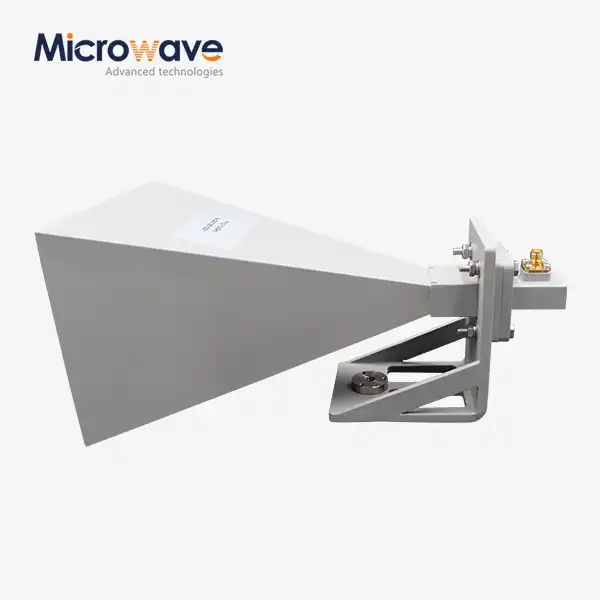 VIEW MOREStandard Horn Antenna
VIEW MOREStandard Horn Antenna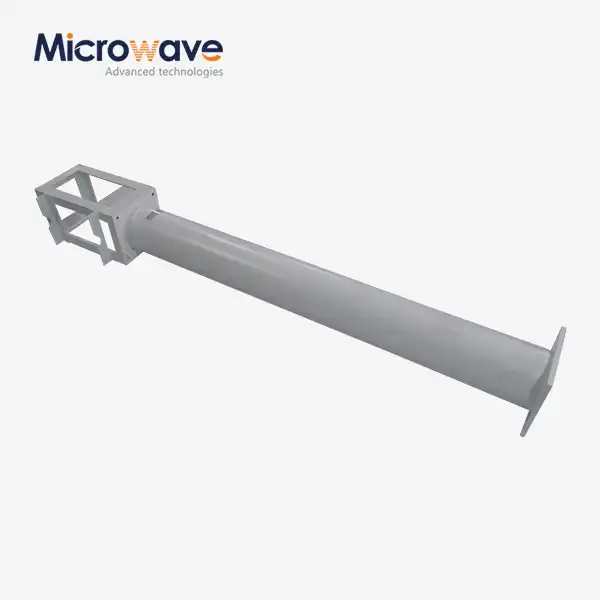 VIEW MOREMMDS Transmitting Antenna
VIEW MOREMMDS Transmitting Antenna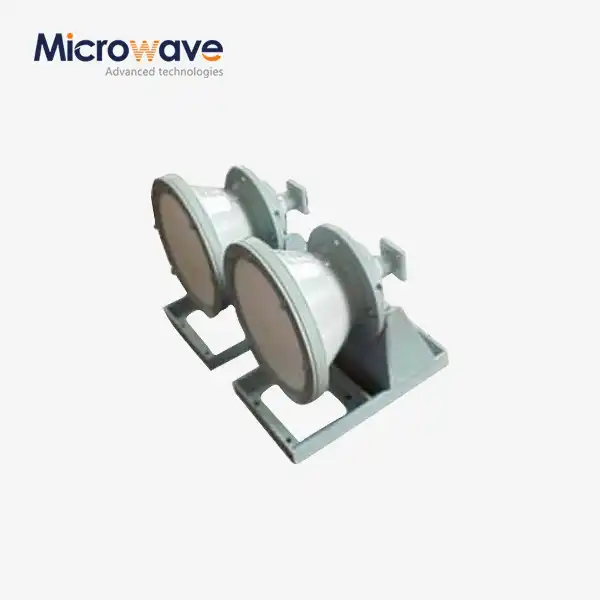 VIEW MOREConical Horn Lens Antenna
VIEW MOREConical Horn Lens Antenna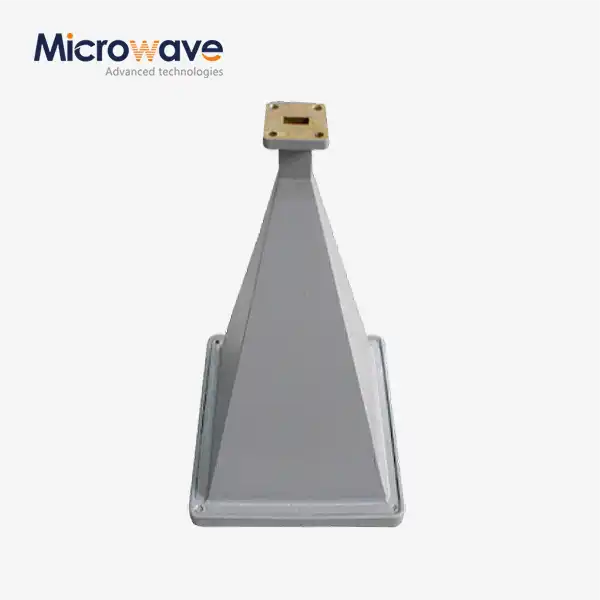 VIEW MOREPyramid Horn Lens Antenna
VIEW MOREPyramid Horn Lens Antenna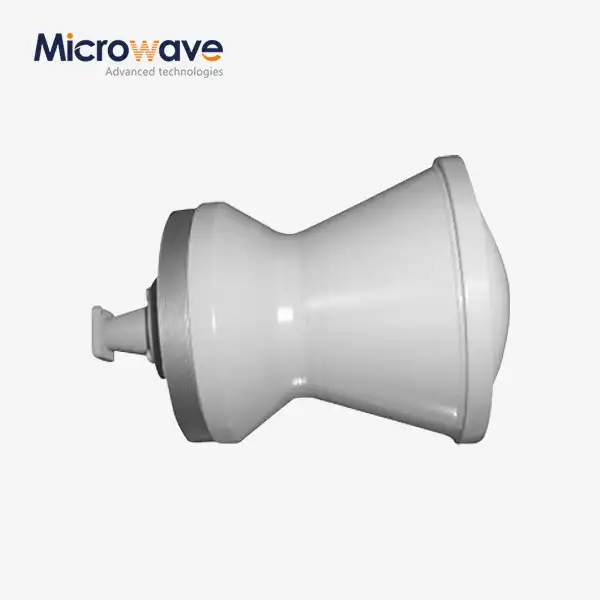 VIEW MOREPoint Focusing Horn Lens Antenna
VIEW MOREPoint Focusing Horn Lens Antenna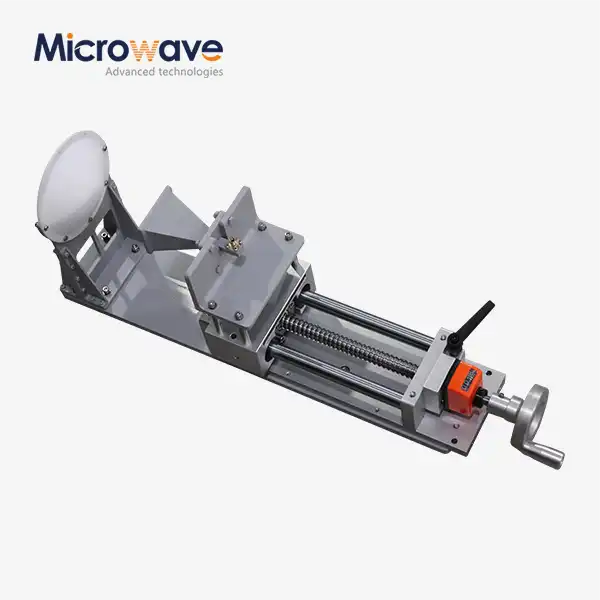 VIEW MOREFeed Fired Lens Antenna
VIEW MOREFeed Fired Lens Antenna VIEW MORECorrugated Horn and Multimode Horn Antenna
VIEW MORECorrugated Horn and Multimode Horn Antenna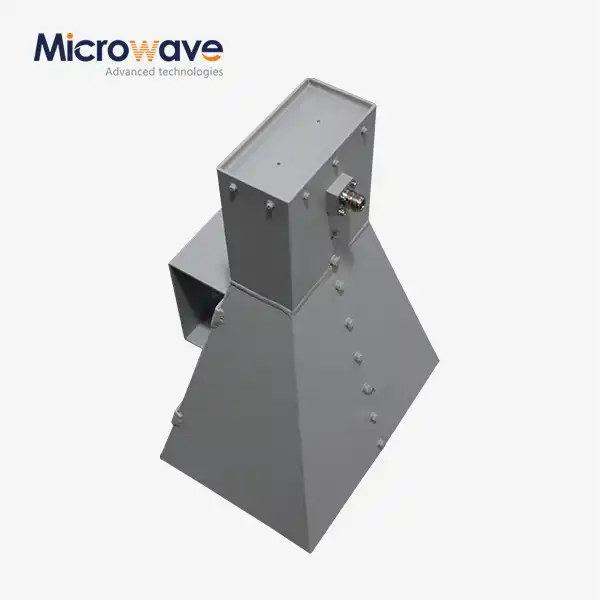 VIEW MOREWideband Double-ridged Horn Antenna
VIEW MOREWideband Double-ridged Horn Antenna




